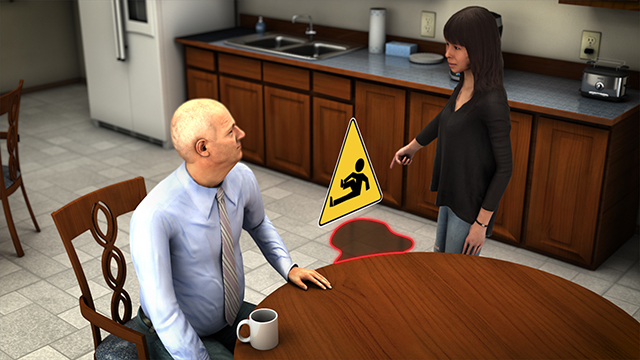




Office Safety
While we most often associate workplace injuries with construction, mining, manufacturing, and other manual labor jobs, injuries can occur even if you spend most of your workday sitting at a desk. Therefore, recognizing common hazards in an office environment and knowing how to reduce risks is vital to creating a safer workplace. This course discusses the common hazards in an office environment and how to reduce risks in order to help create a safer workplace.
Request a demoCourse Details
Learning Objectives
• List some of the most common hazards and injuries in offices
• Identify measures to prevent slips, trips, and falls
• List ergonomic risk factors associated with office work and describe how to reduce the risk of musculoskeletal discomfort
• Describe proper lifting technique
• Describe how to prevent office fires
• Describe the purpose and content of an emergency action plan
Specs
| Course Level | Intermediate |
| Languages | English |
| Compatibility | Audio, Video |
| Based on: | Industry Standards and Best Practices |
Key Questions
What are some ways to prevent slips, trips, and falls in an office?
Some of the methods to reduce the risk of slips, trips, and falls in an office environement include making sure aisles and hallways are kept clear and well lit, using caution when walking through doors and turnstiles, never walking while reading or texting on your handheld device, and securing all carpets, rugs, and mats so they cannot slip.
What are the three main risk factors for musculoskeletal disorders?
The three main risk factors for developing musculoskeletal issues include awkward postures, forceful exertions, and repetitive motions.
What is the most common cause of fires in office environments?
The most common cause of office fires is cooking equipment. Coffee makers, microwave ovens, and other kitchen equipment should only be used in designated areas using outlets specifically intended for their use.
Who is responsible for maintaining a safe work environment?
Everyone is responsible for working safely and keeping coworkers safe.
Do office environments need an emergency response plan?
Yes. All offices should have an emergency action plan that explains the procedures to follow during various emergencies.
Sample Video Transcript
Slips, trips, and falls are some of the most common office injuries. To prevent these types of injuries: Make sure aisles and hallways are kept clear and well lit. Use caution when walking through doors and turnstiles. Never walk while reading or texting on your handheld device. Clean up spills immediately. Secure all carpets, rugs, and mats so they cannot slip. Run cords and cables overhead or otherwise out of the way. Cords should not be run across the floor in traffic areas. If additional power is needed, contact your local office services for assistance. Keep cabinet doors and drawers closed when not in use. Use handrails, keep three points of contact, take one step at a time and do not carry large objects up or down stairs. Slips, trips, and falls can be controlled and eliminated if slipping and tripping hazards are identified, reported, and corrected.
Course Applies To
Demos + Pricing
Learn more about our courses, get pricing, and see our platform.











